SPACEPORTS
Lightning Monitoring & Lightning Protection For Spaceports
Bolstering Spaceport Resilience: Defending Against Lightning
Space launch facilities are instrumental in pushing the boundaries of human exploration and satellite deployment. However, these facilities, often located in coastal regions, are exposed to frequent severe weather, making them susceptible to lightning strikes.
Scientific Lightning Solutions (SLS), as the global leader in lightning science, protection, and engineering, offers pioneering lightning solutions specifically designed to address the complex challenges faced by spaceports.
SLS has a proven track record of providing ground-truth lightning data for critical homeland infrastructure, authorized by esteemed organizations such as the U.S. Department of Defense, the U.S. Air Force, and NASA. Our expert team has performed lightning risk assessments, installed equipment, and inspected existing lightning protection measures for leading NASA facilities, government launch sites, and top contractors in the defense sector.
SLS supplies ground-truth lightning data for all active launch pads and adjacent areas of interest at NASA’s Kennedy Space Center and the adjoining Cape Canaveral Space Force Station. SLS provides similar mission-specific precision lightning monitoring services at Vandenberg Space Force Base, NASA Stennis Space Center, and other critical space-launch and support facilities. Additionally, we have been contracted to evaluate the effectiveness of the defense department’s cutting-edge lightning location and detection systems.
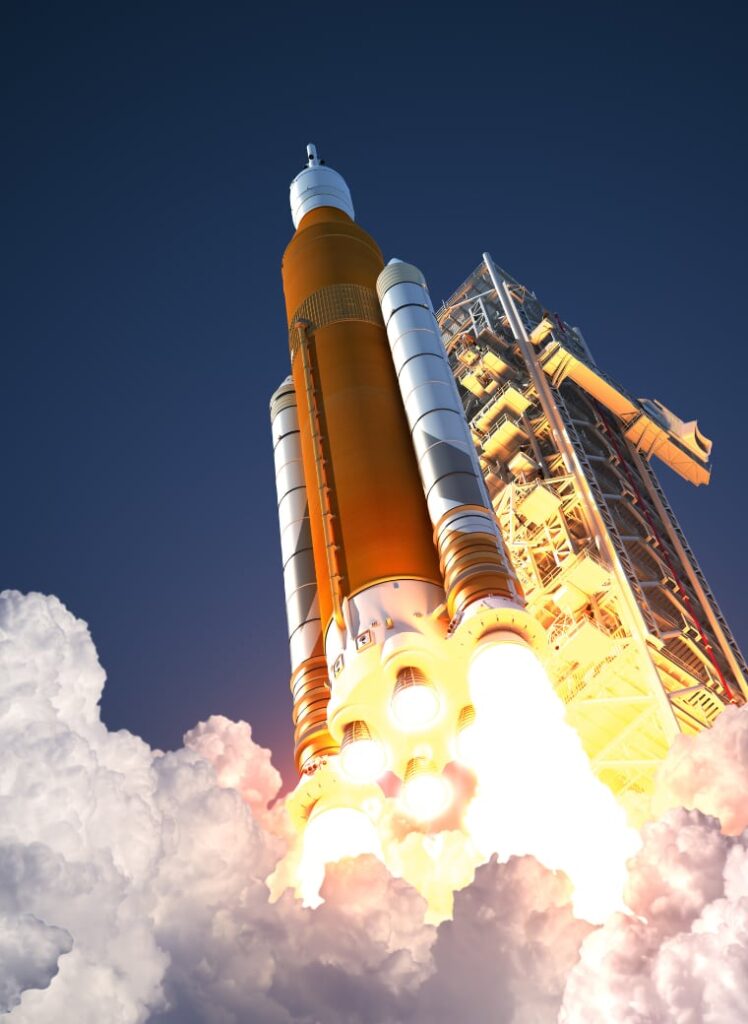
The Impact of Lightning on SpacePort Infrastructure can be profound
Lightning, with its immense electrical energy, poses a significant threat to spaceport infrastructure and activities. Failing to mitigate this threat can lead to dire consequences, emphasizing the need for robust lightning protection measures. Lightning can negatively impact various aspects of spaceport operations in several ways.
Launch Delays: Indirect or direct lightning strikes to launch pads can result in unplanned launch delays. Launch vehicles and their delicate payloads must be protected from the destructive forces of lightning. Even a single lightning strike in the area can trigger safety and inspection protocols, that can delay and sometimes suspend launch operations. Delays not only impact the timely deployment of satellites and scientific missions but also result in significant financial implications for space agencies, commercial launch providers, and their customers.
Equipment and Infrastructure Damage: Launch vehicles, ground support systems, tracking systems, communication infrastructure, and sensitive electronics are all vulnerable to damage from direct and nearby lightning strikes. Lightning can disrupt electronic systems, fry circuitry and wiring, and compromise the integrity of essential components. The resulting equipment damage necessitates costly inspections, repairs or even complete replacements, increasing operational expenses and hindering launch timelines.
Downtime: Recovering from a lightning strike requires comprehensive assessments, repairs, and safety checks. This downtime leads to a halt in operations, causing significant disruptions and lost productivity. Time-sensitive missions may experience setbacks and launch schedules must be rearranged. Downtime not only impacts the space agency or commercial provider but also affects the broader space industry, leading to a ripple effect of delayed missions and reduced overall efficiency.
Data Loss: Lightning-induced power surges can damage control systems and data storage devices within spaceports, resulting in the potential loss of critical mission data. This data loss can disrupt ongoing experiments, scientific research, and data analysis processes. In addition to the immediate setbacks caused by data loss, the long-term implications can hinder progress in understanding our universe and developing cutting-edge technologies.
Safety Risks: Space launch facilities involve complex operations and house highly sensitive and explosive materials. Lightning poses a significant safety risk to facility personnel and infrastructure. A direct lightning strike can result in structural damage, fires, explosions, and potential harm to workers. The safety of astronauts, engineers, technicians, and all personnel involved in spaceport activities must be paramount, underscoring the critical need for effective lightning protection measures.
Mitigating the Lightning Threat:
Safeguarding SpacePort Operations
Lightning Solutions for Launch Complexes
Scientific Lightning Solutions offers specialized solutions designed to address the unique challenges that lightning poses to spaceports, ensuring the safety and uninterrupted operations of your critical infrastructure.
By implementing robust lightning risk assessments along with protection and monitoring strategies, spaceports can safeguard their infrastructure and activities. Scientific Lightning Solutions offers comprehensive solutions tailored specifically for space launch facility resilience:
Comprehensive Lightning Risk Assessments
Our team of experts utilizes advanced software specifically tailored for space ports to conduct thorough lightning risk assessments. We meticulously analyze the risks associated with direct and indirect lightning events within the vicinity of your spaceport, identifying potential vulnerabilities. Through our in-depth analysis, we provide detailed recommendations to enhance your facility’s resilience against lightning, mitigating the risks of equipment damage, launch delays, and fire hazards.
Customized Lightning Protection Systems
We specialize in the design and oversee the installation of customized lightning protection systems tailored specifically to protect your space port infrastructure from direct lightning strikes. Our solutions encompass advanced technologies and engineering techniques, ensuring comprehensive lightning protection for space ports, launch vehicles, payloads, ground support equipment, and critical facilities. In addition to designing robust lightning protection measures, we specify and install surge protection devices to minimize equipment damage and reduce downtime, ensuring uninterrupted operations and safeguarding the integrity of your spaceport infrastructure.
Comprehensive Maintenance and Inspection Plans
We offer tailored maintenance and inspection plans designed to cater specifically to the needs of spaceports. Our experienced team conducts regular inspections, performs meticulous system checks, and rectifies potential issues before they escalate into critical problems. These comprehensive plans ensure ongoing compliance with industry standards and regulations. The plans can be further customized to include training programs for your personnel, empowering them with the knowledge and skills to implement effective lightning protection practices. By prioritizing proactive maintenance, we minimize downtime and ensure continuous protection for your spaceport infrastructure.
Expert Consulting and Design Services
Leveraging our extensive engineering expertise and scientific knowledge, we provide professional consulting and design services that cater to the unique requirements of spaceports. We possess an in-depth understanding of the relevant industry standards and codes for lightning protection in spaceport operations. Active participation in committees such as NFPA, IEEE, and UL enables us to shape these requirements. By partnering with us, you can ensure that your spaceport adheres to the highest industry standards and regulations, effectively minimizing the impact of lightning-related incidents.
Cutting-Edge Lightning and Transient Monitoring Solutions
Our state-of-the-art Jupiter TMS system, purpose-built for monitoring lightning at spaceports, provides continuous monitoring and immediate alerts regarding potential lightning threats. This advanced system delivers real-time, ground-truth data on lightning activity within and surrounding your spaceport, enabling proactive decision-making and swift response to protect personnel, equipment, and facilities. With its exceptional 100% transient detection efficiency and zero-dead time recording, you gain a crucial advantage in staying ahead of lightning storms, minimizing risks, and optimizing safety measures.
Lightning Protection & Lightning Monitoring For Space ports - RELATED PROJECTS
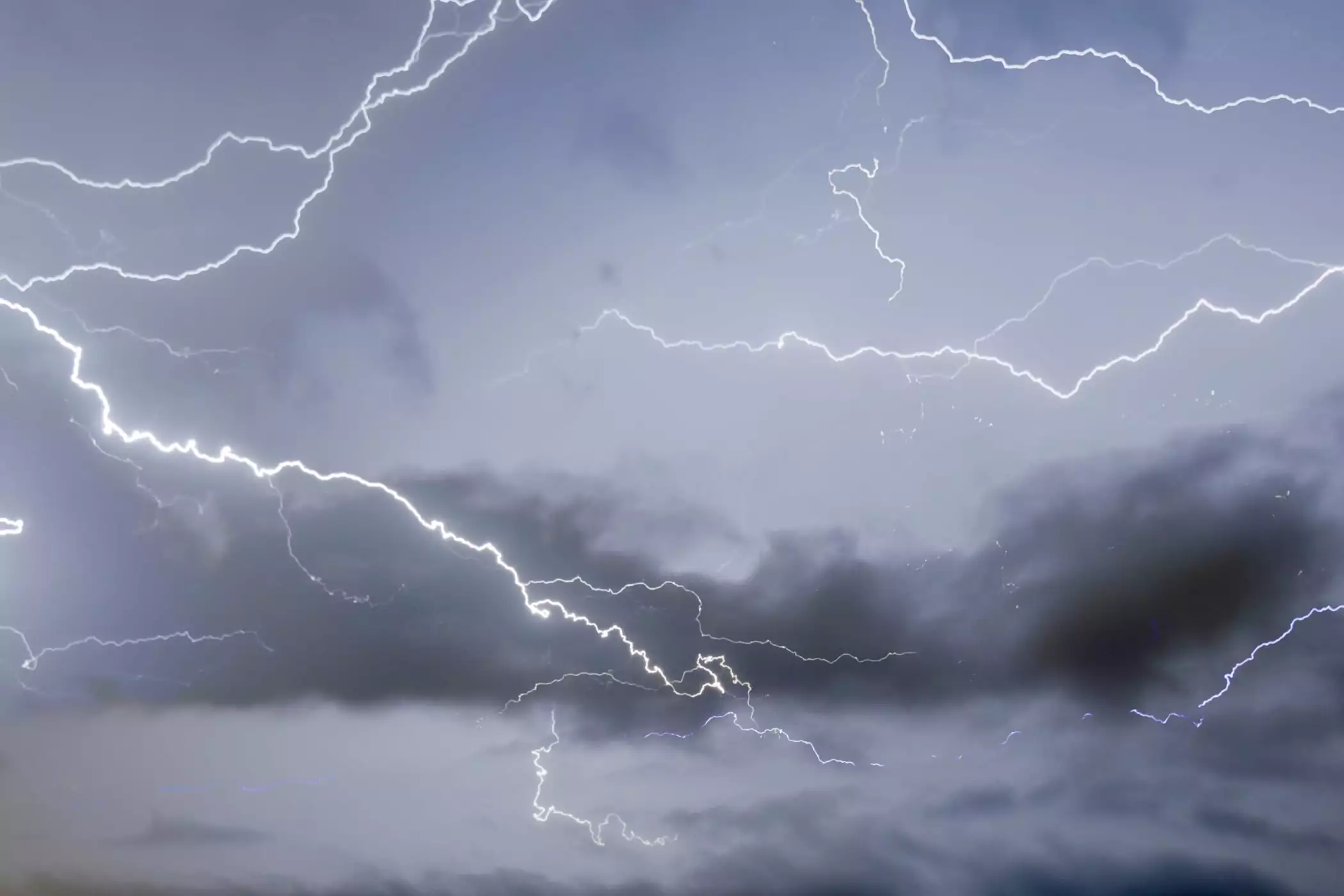
PAYLOAD PROCESSING FACILITY
PAYLOAD PROCESSING FACILITY A major payload processing facility at Cape Canaveral Air Force Station sustained damage due to Hurricane Matthew during the summer of 2016.
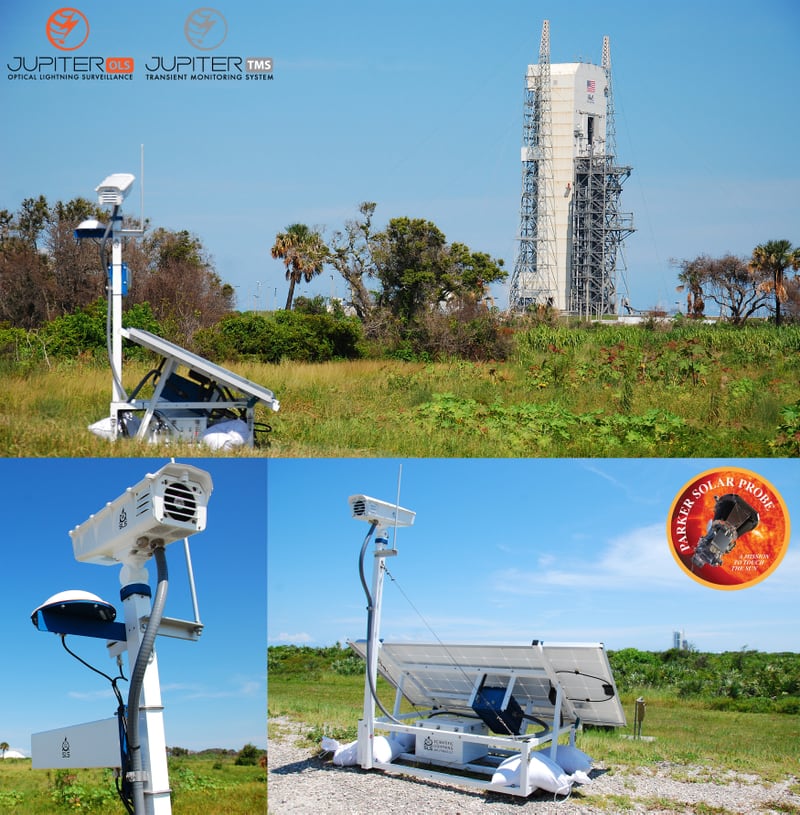
PARKER SOLAR PROBE LAUNCH
SLS designed and deployed a lightning monitoring system for the NASA Launch Services Program to provide precision lightning detection, location, and characterization for the Parker Solar Probe mission.

ORBITAL ATK PEGASUS/CYGNSS LAUNCH
SLS deployed two Jupiter OLS systems and two Jupiter TMS systems to monitor the L-1011 aircraft while the Pegasus XL rocket and CYGNSS satellite were undergoing testing.
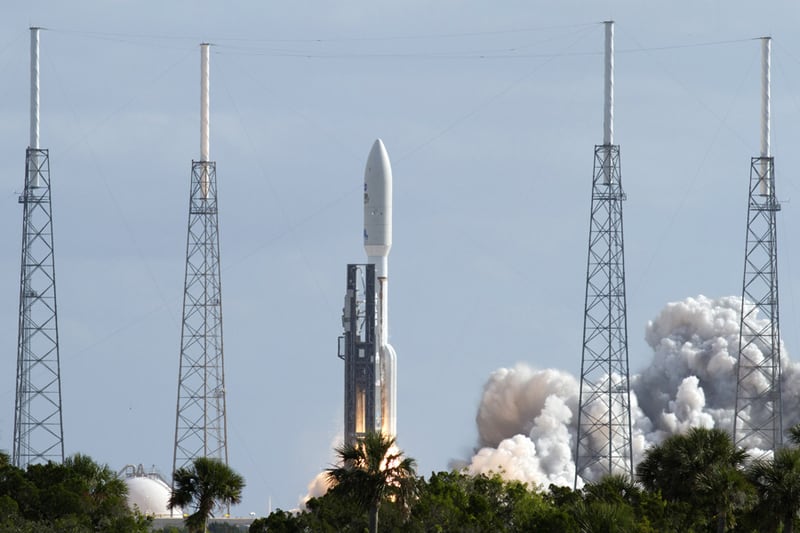
NOAA/NASA GOES-R SATELLITE
SLS deployed a Jupiter TMS system to provide transient monitoring services for the sensitive GOES-R satellite while it was being prepared for launch atop an Atlas V rocket.
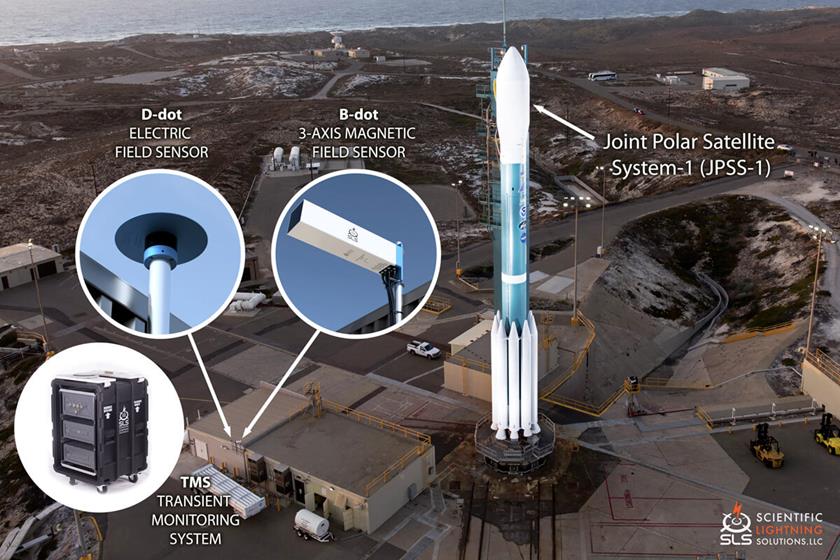
NOAA/NASA JPSS-1 SATELLITE
NOAA/NASA JPSS-1 SATELLITE SLS worked with the NASA Launch Services Program (LSP) to deploy a lightning and transient monitoring system to support continuous lightning surveillance
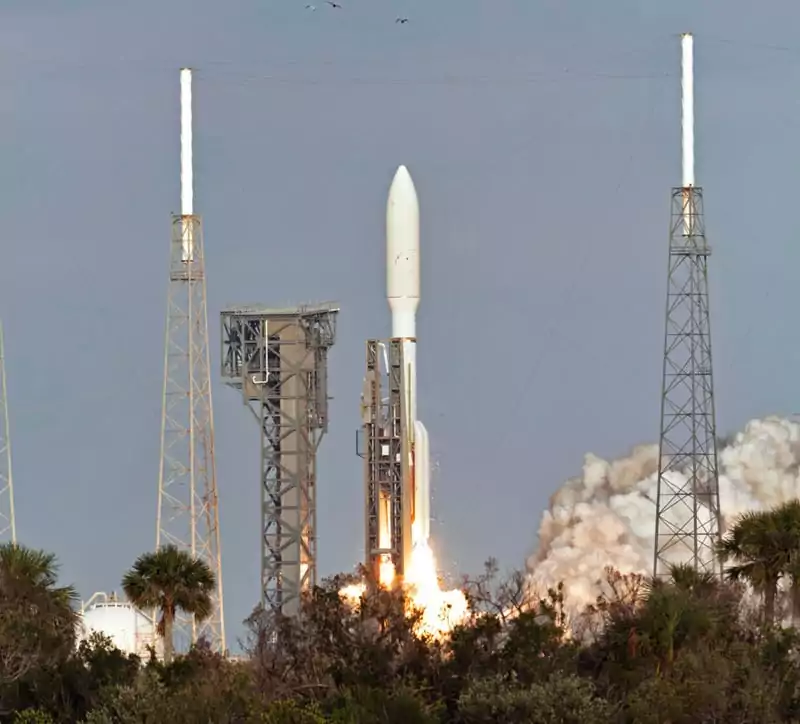
NOAA/NASA GOES-S SATELLITE
NOAA/NASA GOES-S SATELLITE SLS engineers worked with the NASA Launch Services Program (LSP) to deploy a Jupiter Portable Lightning Instrumentation (PLI) System within the Vertical
FAQS - Lightning Protection For Spaceports
There are several standards that provide guidelines for lightning protection at spaceports to help ensure safety and consistency in implementing lightning protection systems at space launch complexes around the world. Some of the relevant international standards and guidelines include:
- IEC 62305 – Protection against lightning. Issued by the International Electrotechnical Commission (IEC), it outlines comprehensive measures for the protection of structures against lightning-induced effects. While not specific to spaceports, its principles are applied to design, install, and maintain lightning protection systems for spaceport infrastructure, considering the electromagnetic compatibility and safety of critical components.
- NFPA 780 – Standard for the Installation of Lightning Protection Systems. Published by the National Fire Protection Association (NFPA), this standard presents in-depth guidelines for the installation of lightning protection systems in various industrial structures, including spaceport facilities. It addresses the analysis of risk, the selection of appropriate protection measures, and the incorporation of grounding and bonding techniques to mitigate lightning-related hazards.
- AIAA S-120-2018 – Guide to Lightning Protection of Aerospace Vehicles. Published by the American Institute of Aeronautics and Astronautics (AIAA), this guide specifically addresses the intricacies of lightning protection for aerospace vehicles, encompassing space launch vehicles. It delves into advanced methodologies for shielding aerospace components against electromagnetic effects induced by lightning discharges during all stages of launch operations.

